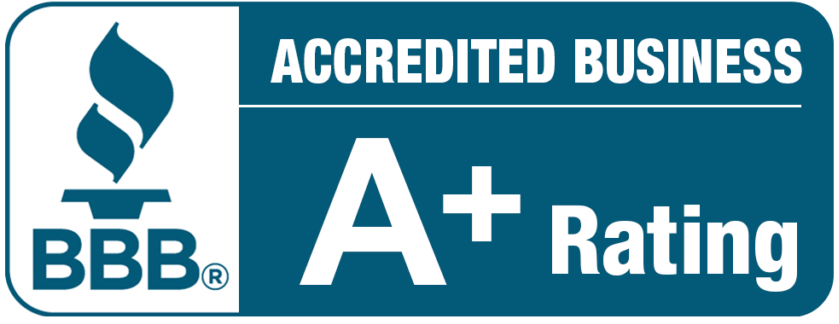In today’s challenging real estate landscape, learning how to sell a house fast in a slow market requires strategic thinking and careful preparation. While a sluggish market may present obstacles, there are proven strategies that can help you attract buyers and secure a sale more quickly than your competition. How to Sell a House Fast in a Slow Market: This comprehensive guide will walk you through the essential steps and tactics to successfully sell your home, even when market conditions aren’t ideal.

Understanding the Challenges of a Slow Market
Before diving into solutions, it’s crucial to understand what constitutes a slow market:
- Higher inventory levels than buyer demand
- Properties staying on the market longer than 90 days
- Frequent price reductions in your area
- Fewer qualified buyers
- More stringent lending requirements
- Lower overall sale prices
Strategic Pricing: The Key to Selling Fast
One of the most critical factors in how to sell a house fast in a slow market is pricing strategy. Consider these essential elements:
Competitive Price Analysis
- Study recent sales of comparable properties in your area
- Analyze current competing listings
- Consider pending sales trends
- Factor in seasonal market fluctuations
- Account for unique features of your property
Smart Pricing Tactics
- Price slightly below similar properties
- Use psychological pricing (e.g., $299,900 instead of $300,000)
- Build in some negotiation room while staying competitive
- Consider a pre-listing appraisal
- Monitor and adjust pricing based on market feedback
Enhancing Your Home’s Appeal
Essential Repairs and Upgrades
- Fix all obvious maintenance issues
- Address structural problems
- Update outdated fixtures
- Repair or replace worn flooring
- Ensure all systems are in working order
- Fix any plumbing or electrical issues
Cost-Effective Improvements
- Fresh paint in neutral colors
- Updated hardware and fixtures
- Modern light fixtures
- New cabinet handles
- Professional carpet cleaning
- Pressure washing exterior surfaces
- Basic landscaping improvements
Professional Staging Strategies
- Declutter all spaces thoroughly
- Depersonalize rooms
- Arrange furniture to maximize space
- Add strategic lighting
- Create inviting outdoor spaces
- Stage key rooms (living room, master bedroom, kitchen)
- Add fresh touches like plants and flowers
Marketing Your Property Effectively
Professional Photography and Virtual Tours
- Hire a professional real estate photographer
- Create virtual 3D tours
- Shoot drone footage for aerial views
- Capture twilight photos for exterior appeal
- Include detailed shots of unique features
- Create video walkthroughs
Digital Marketing Tactics
- Premium listings on major real estate websites
- Social media marketing campaigns
- Email marketing to potential buyers
- Virtual open houses
- Targeted online advertising
- Property-specific website or landing page
- Regular social media updates and engagement
Traditional Marketing Methods
- Professional yard signage
- High-quality brochures and flyers
- Direct mail campaigns
- Local newspaper advertising
- Real estate magazine features
- Networking with local real estate agents
Working with Real Estate Professionals
Selecting the Right Agent
- Research local market expertise
- Review past performance in slow markets
- Check client testimonials
- Evaluate marketing capabilities
- Assess communication style
- Consider their network and resources
Professional Services to Consider
- Real estate attorney
- Professional stager
- Home inspector
- Professional photographer
- Marketing specialist
- Home warranty provider
Creating Attractive Buyer Incentives
Financial Incentives
- Offer to pay closing costs
- Provide a home warranty
- Consider seller financing options
- Offer points buy-down
- Include appliances or furniture
- Provide decorating allowance
- Cover HOA fees for a period
Special Offers
- Flexible closing dates
- Rent-back options
- Early occupancy possibilities
- Moving cost assistance
- Home warranty upgrades
- Utility payment assistance
- Property tax prorations
Preparing for Showings and Open Houses
Showing Preparation Checklist
- Deep clean all areas
- Maximize natural light
- Control temperature
- Remove pets during showings
- Display fresh flowers
- Play soft background music
- Ensure pleasant scents
- Prepare information packets
Open House Strategies
- Schedule during optimal times
- Provide refreshments
- Create information stations
- Highlight unique features
- Collect visitor feedback
- Follow up with interested parties
- Track attendance and comments
Negotiation Strategies for a Slow Market
Effective Negotiation Tactics
- Remain flexible on terms
- Consider all offers seriously
- Respond promptly to offers
- Be prepared to counter-offer
- Focus on win-win solutions
- Document all negotiations
- Stay professional and patient
Common Negotiation Points
- Purchase price
- Closing date
- Included items
- Repair requests
- Closing cost assistance
- Home warranty terms
- Contingencies
Alternative Selling Options
Consider These Alternatives
- Rent-to-own agreements
- Lease options
- Short-term rental
- Property auction
- Real estate investment companies
- iBuyer programs
- Trade-in programs
Maintaining Momentum During the Sale Process
Regular Market Analysis
- Monitor competing properties
- Track market changes
- Analyze feedback from showings
- Review online listing performance
- Adjust strategy as needed
Ongoing Property Maintenance
- Regular cleaning
- Landscape upkeep
- Seasonal decorating
- System maintenance
- Quick repairs
- Fresh touch-ups
- Curb appeal maintenance
Closing the Deal Successfully
Pre-Closing Preparations
- Address inspection issues
- Complete required repairs
- Gather necessary documents
- Coordinate with professionals
- Prepare for final walk-through
- Plan for moving logistics
Final Steps to Closing
- Review closing documents
- Clear final contingencies
- Complete required repairs
- Prepare property transfer
- Plan utility transfers
- Arrange key transfer
- Schedule final cleaning
Frequently Asked Questions About How to Sell a House Fast in a Slow Market:
What defines a “slow” real estate market?
A slow market is characterized by properties taking longer than 90 days to sell, having more homes available than buyers, declining prices, and fewer qualified buyers. Key indicators include increasing days on market, more price reductions, and higher inventory levels compared to previous periods.
How much longer will it take to sell my house in a slow market?
While every market is different, homes in a slow market typically take 30-60% longer to sell than in a normal market. However, implementing the strategies outlined in this guide can help reduce this timeframe significantly.
Should I wait for the market to improve before selling?
This depends on your personal circumstances. If you can wait, it might be beneficial. However, if you need to sell, implementing proper pricing and marketing strategies can help you secure a sale even in a slow market. Consider factors like your financial situation, local market trends, and personal timeline.
How much should I reduce my asking price in a slow market?
The specific reduction depends on your local market conditions and comparable sales. Generally, pricing 5-10% below comparable recent sales can help attract buyers. Work with a real estate agent to analyze recent sales data and determine the optimal price point.
Is it better to start with a higher price and reduce later?
No, this strategy often backfires in a slow market. Properties typically receive the most attention in their first few weeks on the market. Starting with the right price is crucial for maximizing early interest and preventing your home from becoming “stale” on the market.
Should I accept a low offer right away?
Consider the offer in the context of current market conditions, how long your home has been listed, and your personal circumstances. While you shouldn’t accept an unreasonably low offer, being too rigid in a slow market can be costly in the long run.
Which home improvements offer the best return on investment in a slow market?
Focus on:
- Kitchen and bathroom updates (without full remodels)
- Fresh neutral paint
- New carpet or flooring
- Updated lighting fixtures
- Enhanced curb appeal
- Basic landscaping These improvements typically offer the best return while not overcapitalizing in a challenging market.
Is professional staging worth the cost in a slow market?
Yes, professional staging can be especially valuable in a slow market. Staged homes typically sell 73% faster than non-staged homes and often command higher prices. However, you can also consider partial staging of key rooms to reduce costs.
Should I fix everything before listing?
Focus on repairs that:
- Address safety issues
- Fix structural problems
- Resolve mechanical system issues
- Improve aesthetic appeal Minor cosmetic issues might not need immediate attention if reflected in the pricing.
How important is online marketing in a slow market?
Online marketing is crucial in any market but especially important in a slow one. Over 95% of buyers start their search online, so professional photos, virtual tours, and strong online listings are essential for standing out from increased competition.
Should I consider alternative selling methods?
Yes, consider options like:
- Rent-to-own arrangements
- Lease options
- Auctions
- iBuyer programs These alternatives might provide faster solutions depending on your situation and local market conditions.
How often should I hold open houses?
In a slow market, quality is more important than quantity. Hold well-planned open houses every 2-3 weeks, focusing on proper preparation and targeted marketing to attract serious buyers rather than frequent events with low attendance.
What contingencies should I expect buyers to request in a slow market?
Common contingencies include:
- Home inspection
- Financing
- Appraisal
- Sale of current home Be prepared to negotiate these points while protecting your interests.
Should I offer seller concessions?
Seller concessions can be effective in a slow market. Common concessions include:
- Closing cost assistance
- Home warranty
- Repair credits
- Rate buy-downs Consider these options as negotiating tools rather than automatic offerings.
How can I protect myself if the buyer’s financing falls through?
Protect yourself by:
- Requiring strong pre-approval letters
- Setting specific timeframes for financing contingencies
- Keeping backup offers when possible
- Working with buyers using conventional loans
- Requiring earnest money deposits
Is there a “best time” to sell in a slow market?
While spring and early summer traditionally see more buyers, focusing on proper preparation and pricing is more important than timing in a slow market. Local market conditions and personal circumstances should guide your timing decision.
How long should I give a marketing strategy before making changes?
Evaluate your strategy every 30 days. If you’re not getting showings, adjust your price. If you’re getting showings but no offers, focus on presentation or consider different marketing approaches. Regular communication with your real estate agent is key to making timely adjustments.
What if my house doesn’t sell after several months?
Consider:
- Taking it off the market briefly to make improvements
- Significantly adjusting the price
- Changing real estate agents
- Exploring alternative selling methods
- Renting the property temporarily
- Reassessing your motivation to sell
These FAQs address common concerns and provide additional practical guidance for sellers navigating a slow market. Remember that every situation is unique, and working with experienced professionals can help you make the best decisions for your specific circumstances.
Conclusion
Successfully learning how to sell a house fast in a slow market requires a combination of strategic pricing, property preparation, effective marketing, and flexible negotiation. By following these comprehensive guidelines and remaining adaptable to market conditions, you can position your property to sell more quickly, even in challenging market conditions. Remember that patience and persistence, combined with the right strategy, will ultimately lead to a successful sale.
Remember to regularly review and adjust your strategy based on market feedback and showing results. Stay positive and maintain your property’s appeal throughout the listing period. With proper preparation and execution of these strategies, you can successfully navigate selling your home in a slow market and achieve your desired outcome.



